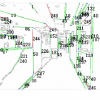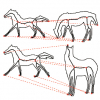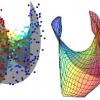ICCV
2009
IEEE
15 years 7 months ago
2009
IEEE
We present a fast and robust system for estimating structure
and motion using a stereo pair, with straight lines as
features. Our first set of contributions are efficient algorit...
ICCV
2009
IEEE
15 years 7 months ago
2009
IEEE
Scenes with cast shadows can produce complex sets of
images. These images cannot be well approximated by lowdimensional
linear subspaces. However, in this paper we
show that the...
ICCV
2009
IEEE
15 years 7 months ago
2009
IEEE
In this paper we propose a robust visual tracking method
by casting tracking as a sparse approximation problem in a
particle filter framework. In this framework, occlusion, corru...
ICCV
2009
IEEE
15 years 7 months ago
2009
IEEE
Our objective is to obtain a state-of-the art object category
detector by employing a state-of-the-art image classifier
to search for the object in all possible image subwindows....
ICCV
2009
IEEE
15 years 7 months ago
2009
IEEE
Supervised learning of a parts-based model can be for-
mulated as an optimization problem with a large (exponen-
tial in the number of parts) set of constraints. We show how
thi...
ICCV
2009
IEEE
15 years 7 months ago
2009
IEEE
Markov Random Field is now ubiquitous in many formulations
of various vision problems. Recently, optimization
of higher-order potentials became practical using higherorder
graph...
ICCV
2009
IEEE
15 years 7 months ago
2009
IEEE
We present a shape-based algorithm for detecting and
recognizing non-rigid objects from natural images. The existing
literature in this domain often cannot model the objects
ver...
ICCV
2009
IEEE
15 years 7 months ago
2009
IEEE
We present a novel variant of the RANSAC algorithm
that is much more efficient, in particular when dealing with
problems with low inlier ratios. Our algorithm assumes
that there...
ICCV
2009
IEEE
15 years 7 months ago
2009
IEEE
We present a manifold learning approach to dimensionality
reduction that explicitly models the manifold as a mapping
from low to high dimensional space. The manifold is
represen...
ICCV
2009
IEEE
15 years 7 months ago
2009
IEEE
We present a method to learn visual attributes (eg.“red”,
“metal”, “spotted”) and object classes (eg. “car”,
“dress”, “umbrella”) together. We assume imag...



